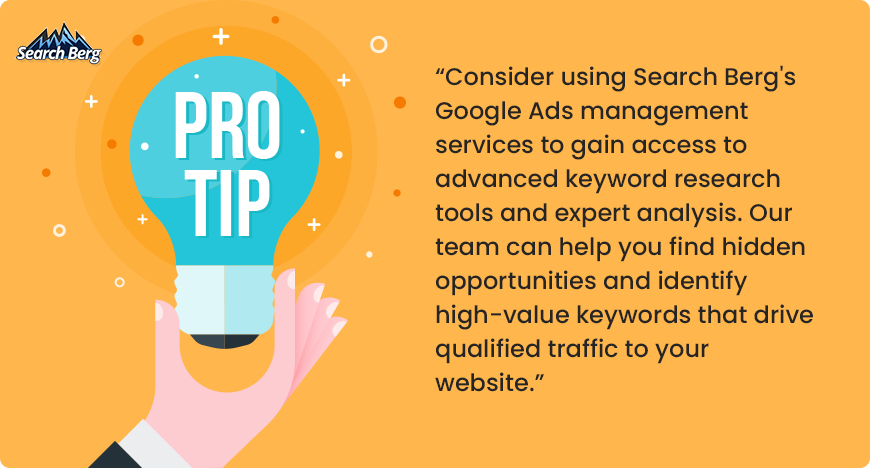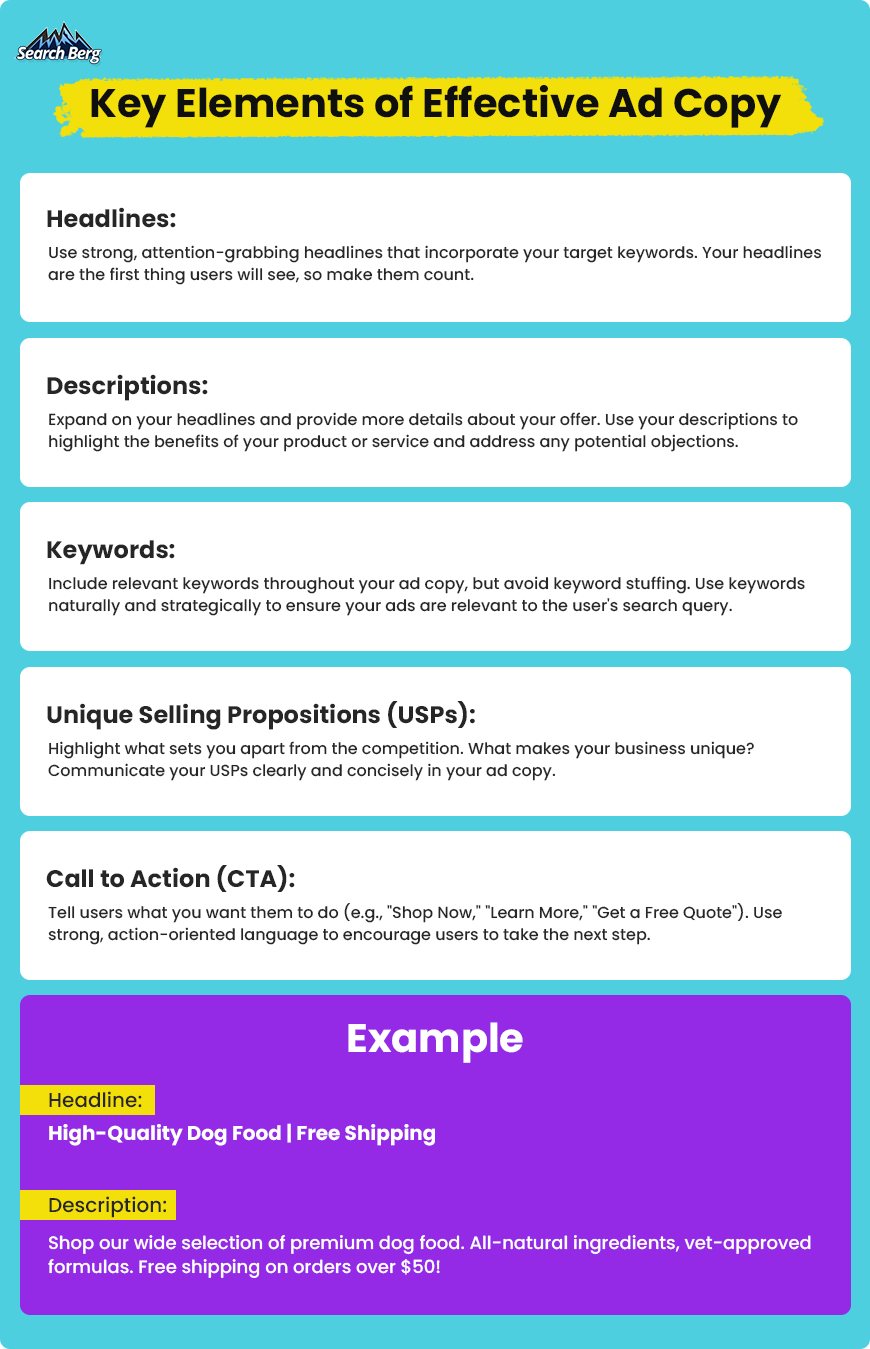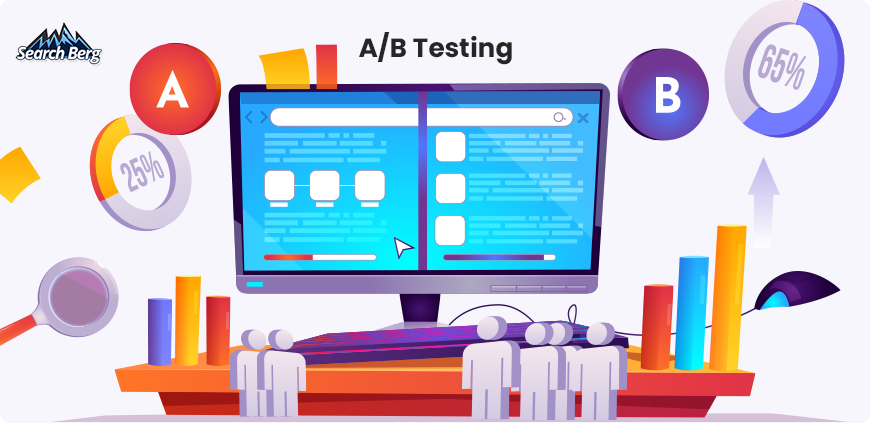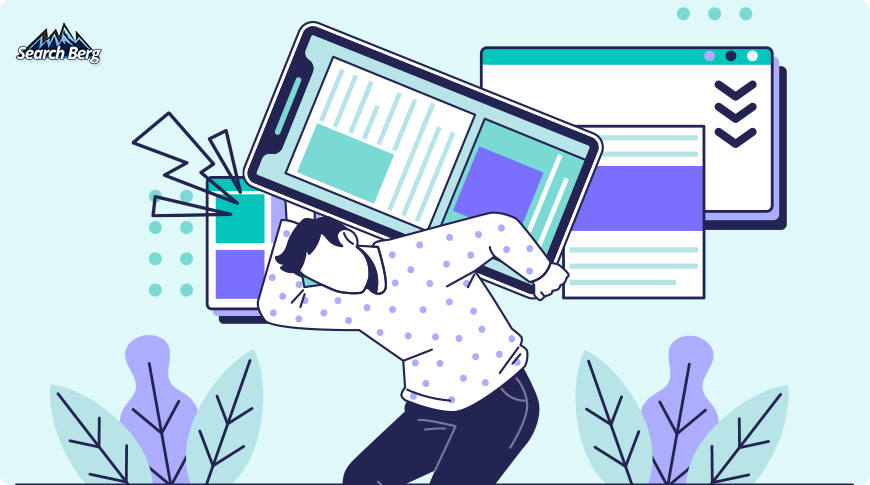How to Run Google Ads Like a Pro in 2025

Google Ads. It’s the powerhouse of online advertising, but let’s be honest, it can feel like a minefield. The constant algorithm updates, the pressure to keep up with competitors, the fear of wasting your budget on ineffective Google AdWords campaigns… it’s enough to make any marketer feel overwhelmed.
You may be seeing some clicks trickle in, but are those clicks translating into actual customers? Are your ads truly resonating with your target audience, or are they simply getting lost in the endless scroll of search results?
In 2025, simply setting up Google Ads won’t get you anywhere. To truly succeed, you need a deep understanding of your audience, a mastery of the platform’s evolving features, and a commitment to ongoing optimization.
This guide is your roadmap to Google Ads success. You’ll learn how to leverage the power of A/B testing, automation, and data-driven insights to continuously improve your campaigns and maximize your return on investment. You’ll also understand the importance of expert Google Ads management.
Get ready to ditch the overwhelm and embrace a strategic, results-driven approach to Google Ads.
1. Lay the Foundation
Before you even think about creating your first ad, you need a solid foundation.
This starts with two vital elements:
1.1. Keyword Research
Keywords are the building blocks of any successful Google Ads campaign. They’re the words and phrases your potential customers use when searching for products or services like yours.
Effective keyword research helps you:
- Understand Your Audience: What are their needs, pain points, and desires?
- Target the Right Searches: Ensure your ads appear to users who are most likely to convert.
- Optimize Your Ad Spend: Avoid wasting money on irrelevant keywords that won’t drive qualified traffic.
How can you conduct keyword research like a pro?
- Brainstorm Seed Keywords: Start with a list of broad terms related to your business. Think about the core products or services you offer and the different ways people might search for them. For example, if you’re a florist, your seed keywords may include “flower delivery,” “wedding bouquets,” “funeral flowers,” and “florist near me.”
- Use Keyword Research Tools: Leverage tools like Google Keyword Planner to expand your list and reveal valuable insights. At Search Berg, we use our own proprietary keyword research tool.
- Analyze Search Intent: Don’t just focus on search volume. Consider the why behind the search. Are users looking for information, to make a purchase, or to compare products? Understanding search intent allows you to tailor your ad copy and landing pages to meet the specific needs of each user.
For example, if someone searches for “best dog food for allergies,” they’re likely looking for informational content, while a search for “buy dog food online” indicates a purchase intent.
- Categorize Your Keywords: Group your keywords into themed clusters to create highly targeted ad groups. This ensures that your ads are relevant to the user’s search query and increases the likelihood of clicks and conversions.
For example, a florist may create separate ad groups for “wedding flowers,” “birthday flowers,” and “sympathy flowers.”
- Don’t Forget Long-Tail Keywords: These longer, more specific phrases often have lower competition and higher conversion rates. While they may have lower individual search volumes, they can collectively drive significant traffic to your website.
For example, instead of targeting the broad keyword “shoes,” you may target long-tail keywords like “women’s running shoes for flat feet” or “leather hiking boots for men.”

1.2. Define Crystal-Clear Campaign Goals
What do you want to achieve with your Google Ads campaign? Without clearly defined goals, your efforts will lack direction and focus.
Common Google Ads goals include:
- Increase Brand Awareness: Reach a wider audience and build brand recognition. This is particularly important for new businesses or those launching new products or services. Brand awareness campaigns focus on impressions and reach rather than immediate conversions.
- Generate Leads: Capture contact information from potential customers. This could involve encouraging users to sign up for a newsletter, download a white paper, or request a quote. Lead generation campaigns focus on capturing user information and nurturing those leads through the sales funnel.
- Drive Website Traffic: Increase visits to your website and specific landing pages. This can be beneficial for businesses that rely on website traffic for generating leads, sales, or brand engagement.
- Boost Sales: Encourage users to make a purchase or complete a desired action. This is a common goal for eCommerce businesses and those offering online services. Sales-focused campaigns typically track conversions and aim to maximize return on ad spend (ROAS).
Align your goals with the right campaign types:
- Search Campaigns: Ideal for driving traffic and conversions from users actively searching for your products or services. These campaigns display text ads on search engine results pages (SERPs) and are highly effective for capturing users with specific purchase intent.
- Display Campaigns: Increase brand awareness and reach a wider audience through visually engaging ads on websites across the Google Display Network. These campaigns offer a variety of ad formats, including image ads, animated ads, and responsive ads, and can be targeted based on demographics, interests, and browsing behavior.
- Video Campaigns: Engage users with engaging video content on YouTube and other platforms. Video ads can be used to tell stories, showcase products, and build emotional connections with your audience. They are particularly effective for increasing brand awareness and driving engagement.
- Shopping Campaigns: Showcase your products directly in search results with detailed information and images. These campaigns are highly effective for eCommerce businesses, as they allow users to see product details, prices, and availability directly in the search results.
2. Craft High-Performing Google Ads Campaigns
With your foundation in place, it’s time to build your campaigns.
This involves three key elements:
2.1. Writing Gripping Ad Copy
Your ad copy is your first (and often only) impression on potential customers.
It needs to be:
- Relevant: Clearly address the user’s search query and highlight the benefits of your product or service. Users are more likely to click on ads that are directly relevant to what they are searching for.
- Gripping: Grab attention and entice users to click. In the crowded digital jungle, your ad copy needs to stand out and capture the user’s interest.
- Action-Oriented: Include a strong call to action that encourages users to take the next step. Tell users what you want them to do, whether it’s visiting your website, making a purchase, or signing up for a newsletter.

2.2. Optimize Your Landing Pages
Think of your landing page as the storefront of your online business. It’s the first thing people see after they click on your ad, and it’s your chance to make a strong first impression.
If you want to successfully run Google Ads, your landing page must be seamless.
But what makes a landing page truly effective?
It’s more than just a pretty design. It needs to be a seamless extension of your ad, perfectly aligned with the user’s search intent.
Imagine someone clicking on your ad for “organic coffee beans.” They shouldn’t land on your homepage with a generic message about your cafe. Instead, they should be greeted with a page showcasing your finest organic coffee selections, complete with enticing descriptions and a clear call to action to “Shop Now.”
This is where relevance reigns supreme. Your landing page must deliver on the promise of your ad, providing the specific information or products the user is seeking. If there’s a disconnect between your ad and your landing page, users will bounce faster than you can say “espresso.”
Beyond relevance, a high-converting landing page needs to communicate your value proposition with crystal-clear clarity.
- Why should a visitor choose your organic coffee beans over the countless other options available?
- Do you source ethically?
- Do you offer unique roasting techniques?
- Do you have a subscription service with exclusive perks?
Highlight what sets you apart and makes your offer irresistible.
Building trust is also essential. Include testimonials from satisfied customers, showcase positive reviews, and display security badges to assure visitors that their information is safe.
People are more likely to convert when they feel confident in your business and believe in the quality of your products or services.
If you’re feeling overwhelmed by the complexities of landing page optimization, Search Berg is here to help. Our team of experts can craft high-converting landing pages that perfectly align with your Google Ads campaign and drive exceptional results.
3. Master Optimization
Launching your campaigns is just the beginning.
To truly run Google Ads like a pro, you need to continuously optimize your campaigns for maximum performance.
3.1. Tracking and Analyzing Your Results
Google Ads provides a wealth of data and reporting tools to help you track your campaign performance.
Key metrics to monitor include:
- Impressions: The number of times your ads are shown. This metric gives you an indication of your ad’s reach and visibility.
- Clicks: The number of times users click on your ads. This indicates how effective your ad copy and targeting are at driving traffic to your website.
- Click-Through Rate (CTR): The percentage of impressions that result in clicks. A high CTR indicates that your ads are relevant and engaging to your target audience.
- Conversions: The number of times users complete a desired action (e.g., making a purchase, filling out a form). This is arguably the most important metric, as it measures the effectiveness of your campaigns in achieving your business goals.
- Cost Per Conversion: The average cost of acquiring a conversion. This metric helps you evaluate the efficiency of your campaigns and identify areas for cost optimization.
- Return on Ad Spend (ROAS): The revenue generated for every dollar spent on advertising. This metric measures the overall profitability of your campaigns.
One of the most valuable uses of these tools is identifying your top-performing Google AdWords campaigns and keywords. By analyzing which campaigns and keywords are driving the most conversions and generating the highest return on ad spend, you can strategically allocate your budget to maximize your results.
It’s like shining a spotlight on the areas that are already generating success and fueling them further.
But it’s not just about celebrating the wins; it’s also about identifying the areas that need a little extra attention. Google Ads reporting tools can help you diagnose underperforming campaigns and pinpoint their weaknesses.
- Are your ads not getting enough impressions?
- Is your click-through rate low?
- Are users bouncing from your landing page without converting?
By analyzing your data, you can reveal the root causes of these issues and make the necessary adjustments to improve your campaign’s performance.
Moreover, these reporting tools allow you to track your progress over time and measure the impact of your optimization efforts. Think of it as charting your course to success. By regularly monitoring your campaign performance, you can see how your changes are affecting your key metrics and ensure that you’re consistently moving in the right direction.
It’s a powerful way to stay on track, validate your strategies, and continuously improve your results.
3.2. A/B Testing

A/B testing (also known as split testing) is a powerful technique for optimizing your Google Ads campaigns. It involves creating two versions of an ad or landing page with slight variations and comparing their performance to see which performs better.
Which elements should you A/B test?
- Headlines: Test different headlines to see which ones generate the most clicks.
- Descriptions: Experiment with different descriptions to see which ones are most effective at communicating your value proposition.
- Calls to Action: Try different calls to action to see which ones encourage the most conversions.
- Images: If you’re running display or video campaigns, test different images to see which ones capture the most attention.
- Landing Page Copy: Test different versions of your landing page copy to see which one converts the best.
- Landing Page Design: Experiment with different landing page designs to see which one provides the best user experience.
Search Berg’s Google AdWords management service can help you design and implement effective A/B testing strategies to continuously improve your campaign performance.
3.3. Harnessing the Power of Automation
Automation is no longer a luxury; it’s a necessity. And Google Ads is no exception. With its ever-growing suite of automation features, Google Ads can act as your tireless assistant, optimizing your campaigns 24/7 and freeing you to focus on other critical aspects of your business.
But what exactly can automation do for your Google Ads campaigns?
Here’s a breakdown of the key automation features and how they can help you achieve your marketing goals:
- Automated Bidding: Say goodbye to the tedious task of manually adjusting your bids. Google Ads’ automated bidding strategies leverage machine learning to optimize your bids in real-time, ensuring that you’re getting the most out of your budget.
These strategies analyze a vast array of signals, including device, location, time of day, audience demographics, and user behavior, to determine the optimal bid for each auction.
Some common strategies include Maximize Clicks (focus on driving traffic), Maximize Conversions (prioritize conversions), Target CPA (control cost per conversion), and Target ROAS (maximize return on investment).
- Automated Rules: Take the manual labor out of campaign management with automated rules. These rules allow you to automate a variety of tasks, e.g., pausing underperforming campaigns, adjusting bids based on performance criteria, receiving email notifications for important events, changing budgets based on performance or seasonal trends, and enabling or disabling ads or keywords based on various factors.
- Dynamic Search Ads: If you have a large website or frequently update your content, Dynamic Search Ads can be a game-changer. These ads automatically generate headlines and landing pages based on the content of your website, ensuring that your ads are always relevant to what users are searching for. This saves you time and effort while also improving the effectiveness of your campaigns.
- Performance Max Campaigns: These campaigns are designed to drive conversions and value across all of Google’s channels, including Search, Display, YouTube, Discover, Gmail, and Maps. Performance Max uses AI to optimize your creatives, bidding, and targeting to reach your most valuable customers.
By providing Google with your creative assets, audience signals, and conversion goals, Performance Max takes the reins and automatically optimizes your campaigns across all channels.
- Smart Campaigns: If you’re new to Google Adsor have limited time to manage your campaigns, Smart campaigns offer a simplified approach. These campaigns use automation to handle most of the heavy lifting, including ad creation, targeting, and bidding.
All you need to do is provide some basic information about your business and your goals, and Google’s AI will take care of the rest.
Overwhelmed by Google Ads? You’re Not Alone

Let’s be real, Google Ads can feel like a full-time job. Between keeping up with the constant algorithm updates, testing different strategies, and analyzing endless data, it’s easy to get lost in the weeds… even for experienced marketers.
You may be thinking, “I can handle this myself.” But ask yourself:
- Are you truly maximizing your ROI? Or is your budget slowly dwindling with minimal results to show for it?
- Do you have the time to dedicate to ongoing optimization? Or are other areas of your business suffering because you’re bogged down in the complexities of Google Ads?
- Are you confident you’re staying ahead of the curve? Or are your competitors leaving you in the dust with their advanced strategies and cutting-edge tools?
If you’re not answering these questions with a resounding “Yes!” it may be time to consider bringing in the experts.
Why Partner with Google Ads Management Pros?
Think of a professional Google Ads management team as a high-performance pit crew for your marketing campaigns. They bring a wealth of knowledge, experience, and specialized tools to the table, ensuring that your campaigns are running at peak efficiency.
Here’s how Google Ads management services can benefit your business:
- Get Expert-Level Expertise: You gain access to a team of certified Google Ads service providers who live and breathe paid search. They possess in-depth knowledge of the platform, its intricacies, and the latest best practices. It’s like having a dedicated team of marketing strategists, analysts, and copywriters all rolled into one.
- Reclaim Your Valuable Time: Stop wasting precious hours wrestling with Google Ads. A management service takes the heavy lifting off your plate, freeing you to focus on what you do best: running your business.
- Boost Your ROI: With their data-driven approach and advanced optimization techniques, Google Ads management service providers can significantly improve your return on investment.
At Search Berg, we don’t just manage your Google Ads campaigns; we become an extension of your marketing team. We’re passionate about helping businesses like yours achieve remarkable results through strategic, data-driven paid search campaigns.
We work closely with you to develop a customized Google Ads strategy that aligns with your specific business goals and target audience. We track your key metrics and provide you with clear, concise reports that demonstrate the value of our services.
Ready to experience the Search Berg difference?
Start working with our Google Ads management team today!
Don't Fall Behind in the Google Ads Race!
Search Berg’s Google Ads experts are here to help you achieve unprecedented success. Contact us today for a free consultation, and let’s discuss your campaign goals.
No spam, just expert advice!














